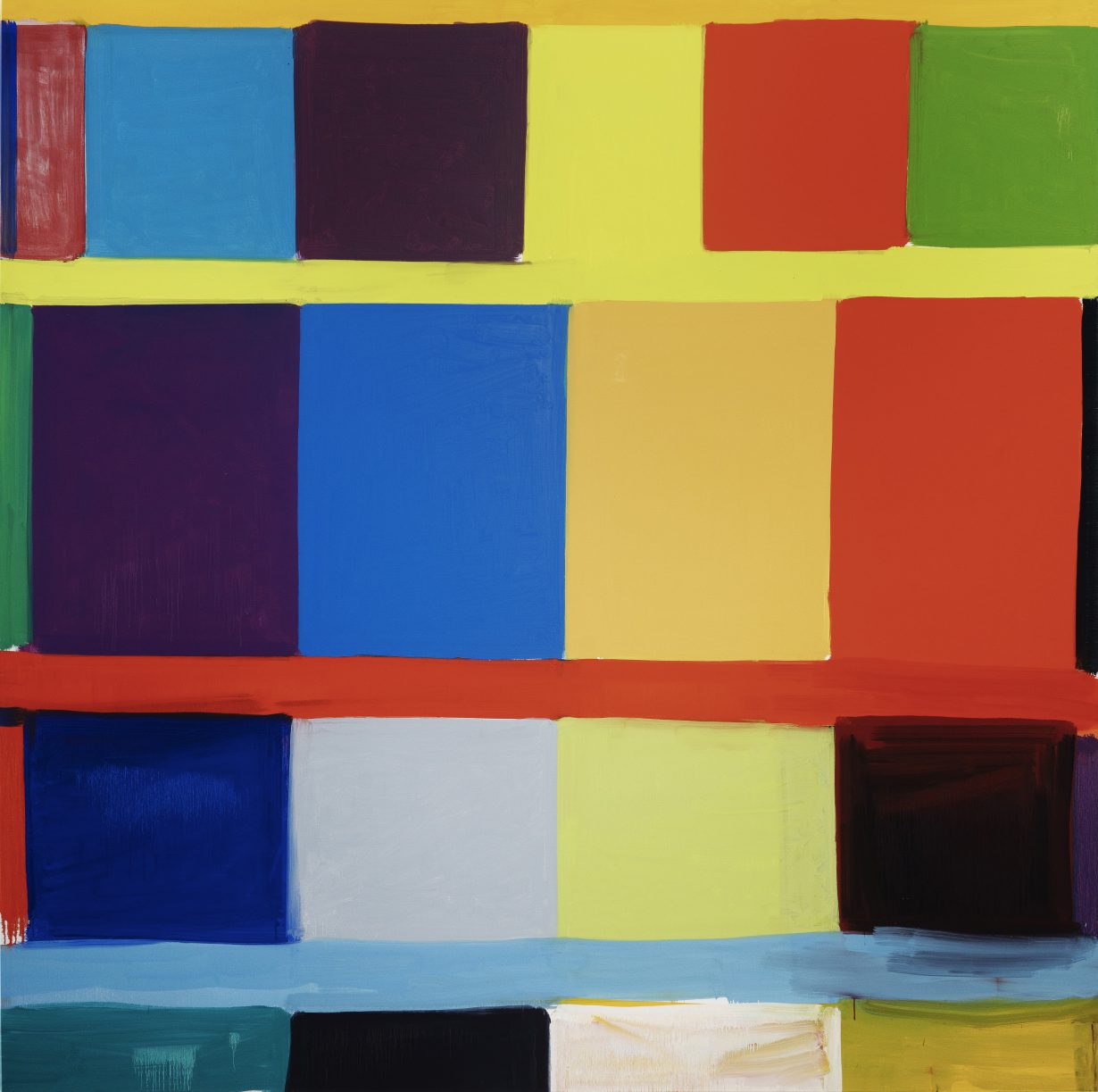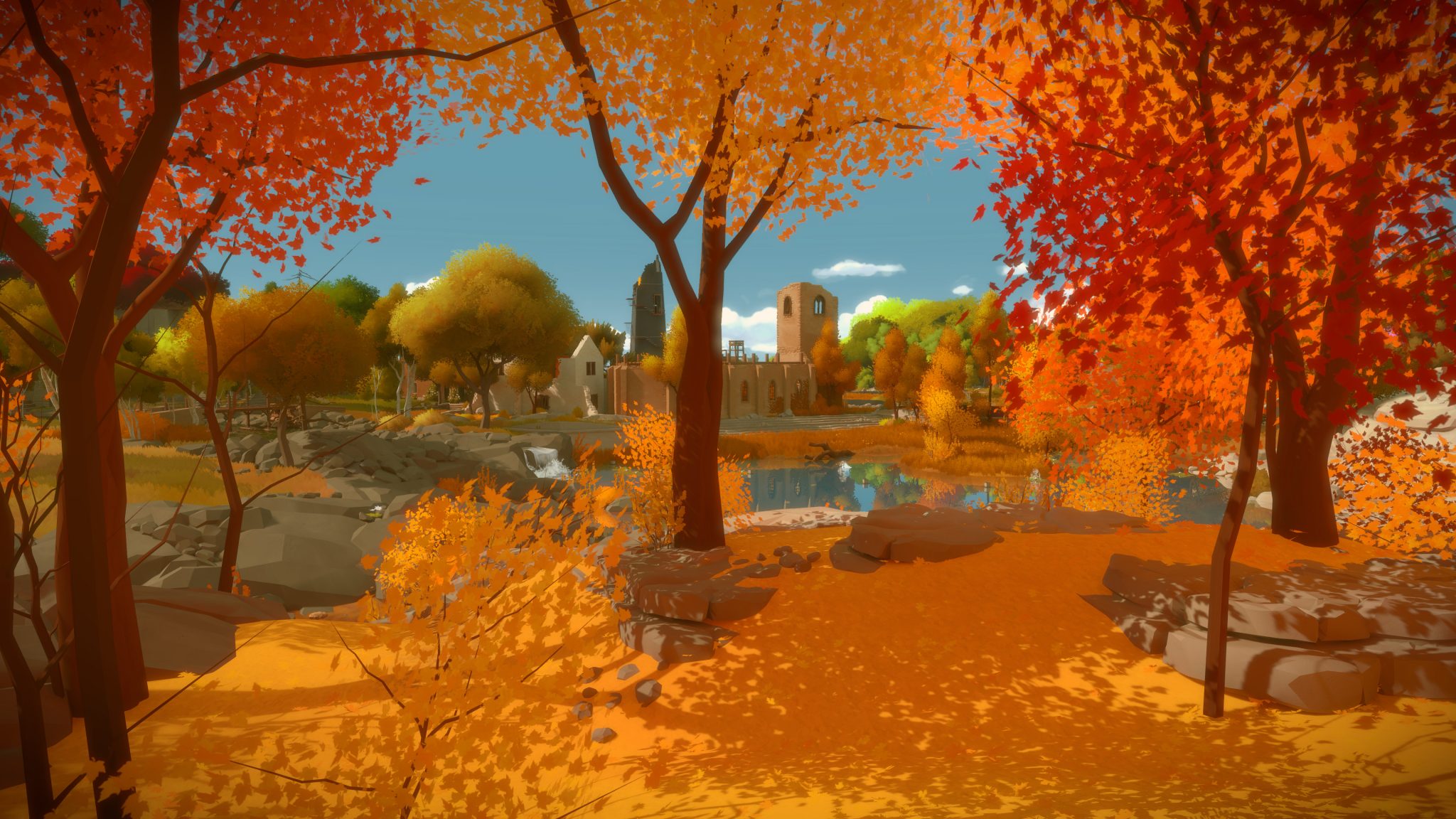What does the silent instruction of the 2016 videogame, The Witness, share with the search for meaning in Mary Heilmann, Stanley Whitney and Sol LeWitt?
The Witness was released nearly eight years ago now, in 2016. A labour-of-love project that took designer Jonathan Blow seven years to complete, the cult puzzle-based videogame found immediate success. You could describe it as a series of grid-based puzzles, hidden throughout a resplendent, technicolour island devoid of inhabitants, but littered with the remains of their society. Beyond the occasional birdcalls, or the crunching of gravel underfoot, The Witness’s world – its magenta trees, clear-blue lakes, bright autumnal foliage – is mostly silent. Blazing direct sunlight floods everything. It’s all virtual, of course. Nonetheless, it feels dazzling and wakeful, while somehow also intensifying the ominousness of unknown threats possibly lurking in wait. Visual mazelike puzzles – functioning like door codes – appear on locked gates and entryways barring entry to abandoned shipyards, treehouses and river locks. What technology remains is still functional: gates will still unlock with a satisfying thunk when puzzles are solved; screens glitch and crackle, then power up.
In The Washington Post, Christopher Byrd described the game as ‘daunting, confounding, maddening, and beautiful – altogether, in that order’, and the game made many ‘best-of ’ lists in ensuing years. The classic 1993 island-based game Myst was a source of inspiration for The Witness, and indeed both games are very much part of a lineage of similar offerings. In this genre, a player is dropped into some sort of a contained area – more often than not, it is an island with distractingly stunning views and mysterious traces of previous human life. Given very little information, players find themselves trying to overcome disorientation and a growing sense of loneliness, while left to their own devices: exploring, poking around, solving puzzles of increasing complexity. Since almost no overt help is offered by the game, the epiphanies that gradually pile up feel exhilaratingly like one’s own.
That exhilaration powered me and a friend through the game in one sitting, on an olive-green Ikea sofa that became our base camp. There, snacks and notebooks, and paper and pencils, and laptops, and eventually piles and piles of paper – sketches of grids and routes – accumulated around us. One could say we ‘binged’ the game in one day. But bingeing isn’t quite the right word, because playing The Witness isn’t anything like eating a family-size bag of Cheetos, in disregard of stomach pain. The Witness feels a lot more like inching forward on a tightrope so shaky that you can’t bring yourself even to look up and see how much further you have to go. All the while, a slow euphoria sets in – a disbelief: ‘Since when did we know how to walk on tightropes?’

So why revisit The Witness, eight years later? By magazine standards, it is unusual, maybe even a little suspect, to write about something released so long ago, without a round-number anniversary, or a death (God forbid) marking the occasion. No such thing here. I’m coming back to The Witness because it has taken me this long – having encountered the game but then also having visited a good many abstract painting shows in the near-decade since – fully to realise how much these two things have become entangled in my experiencing of both.
Like many others, I don’t necessarily love the more controversial opinions Blow occasionally shares on social media. I sometimes even strongly disagree. Yet some of Blow’s interviews have also helped me understand why his work has felt so meaningful. In one, he has talked about how the gaming industry’s creators often merely copy cinematic conventions (such as cut scenes) in a way that is ‘missing something basic’. He has also explained, ‘I want to make games for people who read Gravity’s Rainbow.’ While I’ve never read Thomas Pynchon’s tome, what I can say is that Blow did make a game for people who look at Carmen Herrera and Mary Heilmann, Stanley Whitney and Sol LeWitt.
Obvious surface connections between The Witness and many of these artists’ works will immediately hit viewers. Grid-based schema. Maplike spatial systems. It’s worth nodding at all that overlap, as much as it’s worth acknowledging, more broadly, a long lineage of discourse comparing abstraction to play. You can’t pick out five essays on abstraction without one of them framing its methodologies in either rule- or game-based terms. Curator and art historian Kirk Varnedoe pulled no punches, saying: ‘Abstract art is a symbolic game, and it is akin to all human games: you have to get into it, risk and all, and this takes a certain act of faith.’

In many of the art-as-games discussions, the artist is often framed as the gamer. (Take Thomas Schütte, for example: “I try to keep it as a game, and not as work. You have rules, you follow the rules and you break the rules. I’m exhausted at the end of the day, but I try to keep it as a fun operation.”) Less common, but the one I want to nudge further into the foreground here, are the perspectives that see the audience as the gamer, even when the art isn’t explicitly dubbed ‘interactive’.
What The Witness leans hard into is its strategy of teaching players a nonverbal visual language and a growing fluency with that yields access to more and more parts of a virtual world. The game remains near-absolute in its oracular silence. Zero prompts, zero pop-up instructions. (Not to spoil things, but there are occasional voices intoning certain messages; however they largely don’t help you progress through the game.) The very first thing players encounter, when beginning in a narrow tunnel cut off by a locked door, is a panel marked with a straight flat line. Tracing one’s on-screen cursor from one end of it to the other – from point A to point B – results in the clank of a mechanism unlocking. With the first puzzle finished, the door swings open. A new tunnel presents itself. The next puzzle appears – this time, a little different. Point A to point B is now a right-angled zigzagging pattern: a simple staircase.
This is where the game really gets going. It’s when you realise that you’ll be learning a language broadly dictated by patterns of iteration and successive difference, baby steps that become ever more complex. Solving puzzles permits passage down mountain cores, onto boats, across hanging bridges connecting abandoned treehouses. Rather than prompts and explanations, the game’s insistent wordlessness means that the player is forced to look, closely, for nonverbal meaning. The repetition of three shapes, and then a subtle change of hue in the fourth – does that mean something? The apple tree near one puzzle panel – does that mean something?

Often, references to other games pop up. As Peter Halley built on Josef Albers’s nested rectangles, so too does The Witness build on the recognisable visual forms of its predecessors, whether hedge mazes or Tetris’s permutations. But most intriguing to me is that the game’s wordlessness means there is technically no overt confirmation, ever, that a player has ‘won’ or ‘lost’ anything – or even advanced to the next stage. And this is where The Witness and similar games move away from the realm of gamers-as-schoolchildren – getting ‘levelled up’, or getting trophies and gold stars and pats on the head – and closer towards an experience of viewing art (and in particular, geometric abstraction indebted to Minimalist legacies). Because, for a long time in The Witness (I won’t spoil various later stages), the only in-game rewards are access to further exploration – opportunities to notice more. (In that sense it’s not quite an open-exploration sandbox game either.) What kept me progressing through the game felt surprisingly close to what keeps me moving onward through, say, a Jennie C. Jones retrospective. If we acknowledge by now a general recognition that our bodies in space – jostled by weekend crowds or posing in selfies next to artwork – inform our exhibition viewing, then the euphoria that sometimes underlies the exploration of space in parallel to the exploration of resonances between artworks, is something The Witness seems to recognise. The game seemed to see whatever part of me both propels me from painting to painting and compels me to consistently embarrass myself by ambling down gallery staircases, or into backroom storage and coat closets, always half-hoping the exhibition continues into the next room.
‘Are video games art?’ is the tired question that nags at the root of most art-writing about video games, and the one that seems to get eyerolls from contemporary art aficionados, inured already to things like found objects, social practice, relational art and Maurizio Cattelan’s bananas. While a debate around whether or not The Witness is ‘art’ seems uninteresting, what has me intrigued is that The Witness and similar games are startlingly proximate to a kind of thinking and looking that happens at certain exhibitions. I suspect that this closeness is a first glimpse into a whole next level of permeability between two genres. And while that permeability has only been barely explored, it hints at new forms of creative expression that most of us can’t quite picture yet, but maybe those with the right kind of prescience will pursue.
Dawn Chan is a writer and curator based in New York
